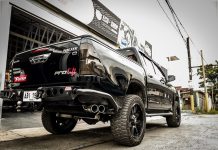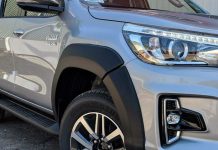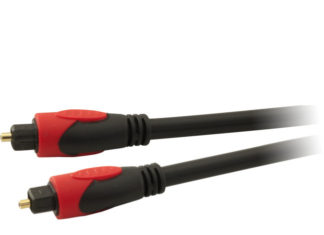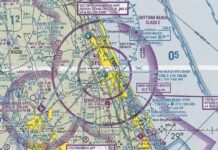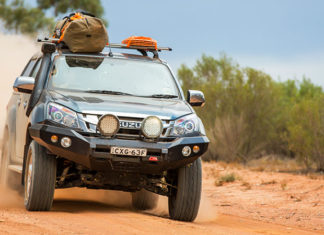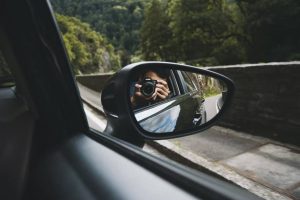
One of the first things we learn when taking driving lessons is properly using mirrors. Drivers are well aware of how the rear-view mirror and the side door mirrors help to increase rear and side visibility in countless driving situations. Whether it’s reversing, overtaking, merging or changing lanes, you’ll glance at both mirrors at least a couple of times during each maneuver.
Blind-spot monitoring functions in conjunction with mirrors to enhance safety. You’ll get visual and audio alerts when vehicles, cyclists or pedestrians are in or entering the car’s blind spot. For all other instances though, making good and timely use of traditional door mirrors means better vision on both sides of the vehicle, and a safer journey.
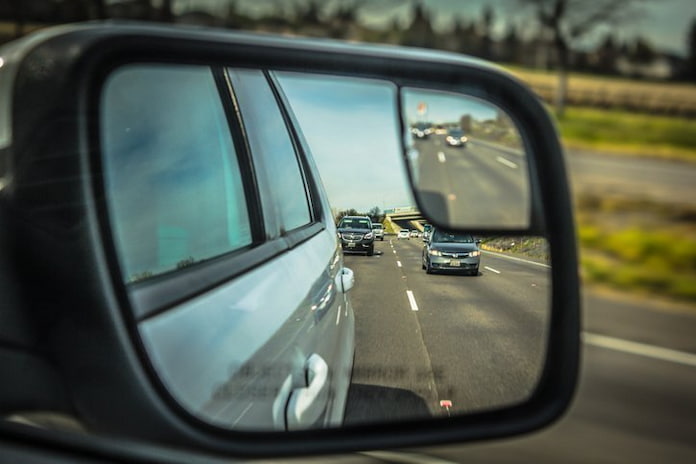
Both driver and passenger side mirrors are required by Australian law and both need to be in working order. Getting pulled up because of damaged or defective mirrors will most certainly mean a hefty fine, and in some states demerit points.
Mirror Types
Depending on the vehicle, there are half a dozen of stock mirror types. There are also replacement universal car mirrors that fit more than one make or model. Some mirrors that are listed below fall in more than one category.
- Manually adjusted – these are the mirrors that you’d usually find in older cars. They are adjusted either by hand, or from the inside of the vehicle with a cable-operated lever.
- Electric mirrors – this is the norm in most cars today. A combination switch located at the driver side mirror lets you choose which mirror to adjust, and the side-to-side and/or up and down movement of said mirror and mirror housing.
- Folding mirrors – are also becoming a standard kit. They can be manually folded toward the car, with the buttons in the driver side door being held down or automatically folded with the ignition or locking and unlocking the vehicle.
- Heated mirrors – these come in handy in winter to remove condensation that you’d otherwise need to wipe off. Most electric mirrors are also heated.
- Mirrors with inbuilt Indicators (blinkers) – Again this is now standard on most new vehicles. The higher position of the integrated indicator allows for other traffic or pedestrians to better see your intentions, either turning, merging or overtaking.
- Driver side vs passenger side mirrors- though they seem similar, the driver side mirror has flat glass, while the passenger side mirror has convex glass to offer a wider field of view, but also makes “objects in the mirror closer than they appear”.
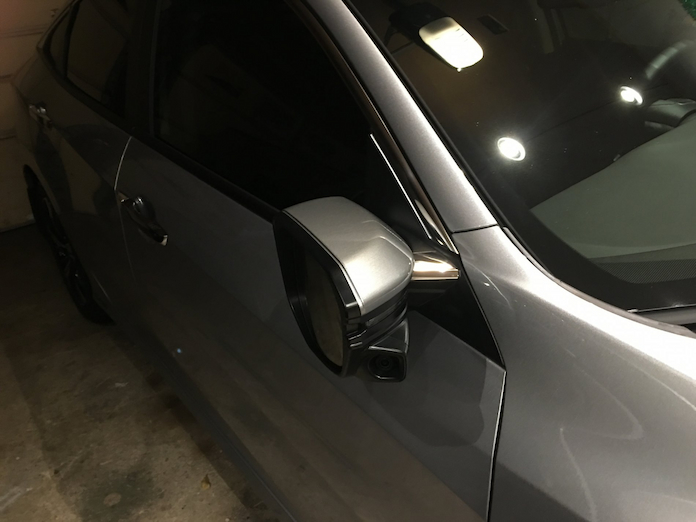
In recent cars, a driver or passenger side door mirror will be electrically operated, have a heating and/or folding function, and will probably include an integrated indicator. These are the standard types of mirrors. There are also towing mirrors, that are larger in every way, and fitted to utes or trucks when towing trailers, boats or caravans. Most can also be manually folded.
Parts of a Car Door Mirror
Mirrors slot into the door (not the side wings) by way of a gasket. The outer portion of this is covered by a base cover and includes an opening for the wiring responsible for the heating and folding function, as well as the indicator. The visible portion of the mirror Is the mirror assembly or housing. This has a mirror cover on the outside that can be optioned in different materials. Integrated into the cover is the indicator. On the side facing the driver, the glass fits onto a backplate or simply sticks to the housing with adhesive. Owners can find replacement covers and glass cheaply. Simple and small stick-on blind spot glass is a safety addition worth having, as it widens your field of vision. Covers in chrome are sought after, and go well with other chrome additions in the vehicle.
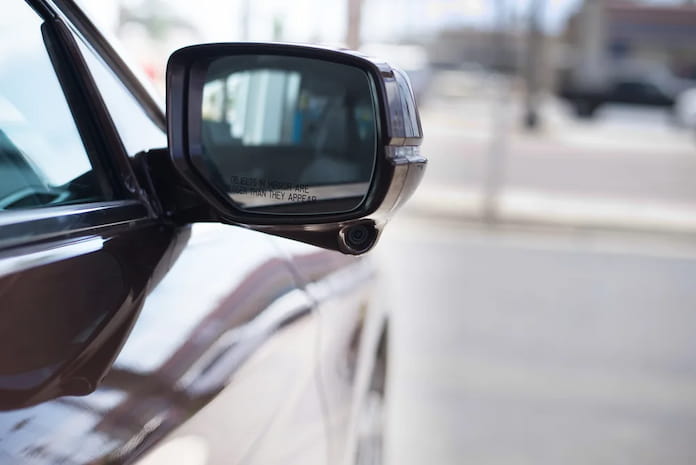
Replacing Your Existing Mirrors
If there is damage to the mirror housing covers or the glass, these can be swapped out with OEM or aftermarket parts. Alternatively, if the damage is beyond repair, your best choice is to get universal car mirrors, as an inexpensive replacement. These can be better than your original mirrors in a few ways. First, they are typically larger. This allows for a wider field of vision. If you’re often towing, but don’t want the bulk of genuine towing mirrors, then a pair of universal mirrors on either side of the vehicle is the next best thing.
Next, is the design. It’s simple, yet practical. The rectangular shape may not be the most aerodynamic, but you won’t be using these on a track car. Bigger mirrors will be better suited to bigger vehicles, especially utes. That they can be fitted on almost any ute, and at a fraction of the cost of OEM variants, means fewer worries when off-roading where mirrors always take a beating.
The construction is rugged, without feeling cheap, and this won’t in any way spoil the look of the vehicle. Materials are the same as the OEM mirrors on utes and trucks. All universal car mirrors are sold with supplied brackets, gaskets and mounting screws, so installation is relatively straightforward and quick. Deals can be had when purchasing both driver’s and passenger side mirror combos.


